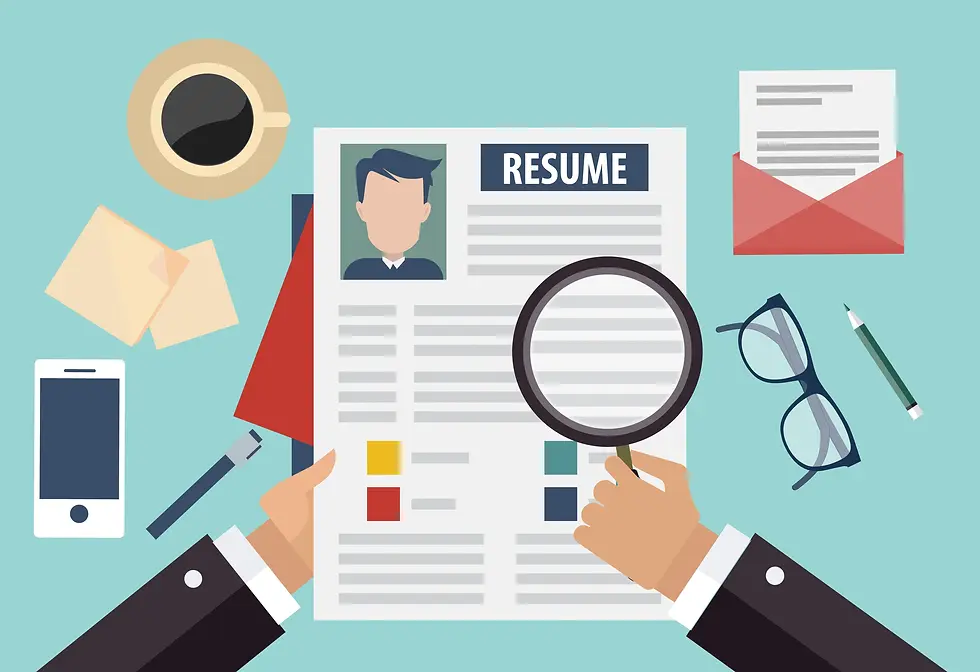How to Write a Resume for Shift Work and Casual Jobs
- Adrienna Clarke

- 1 day ago
- 6 min read

When applying for shift work or casual jobs, the stakes are high. These roles are often more flexible in terms of hours, but they can also be highly competitive. Whether you're applying for a position in retail, hospitality, or in the industrial sector, the way you present your experience and skills on your resume can make all the difference. To stand out in a crowded job market, it’s crucial to showcase your suitability for shift work or casual positions in a way that appeals to employers.
Writing a resume for casual or shift work requires more than just listing your previous job duties. You need to demonstrate your reliability, ability to work under pressure, and the flexibility to adjust to various shifts and conditions. Employers want to know that you are dependable, adaptable, and capable of handling the dynamic nature of these types of jobs.
Here’s how to structure and write a resume that will increase your chances of landing a shift work or casual job.
Understanding Shift Work and Casual Jobs
Shift work and casual roles are common in sectors that operate outside of the traditional 9-to-5 hours, such as retail, hospitality, healthcare, manufacturing, and logistics. These jobs often require employees to work nights, weekends, or rotating shifts, and can sometimes involve irregular hours.
Casual work, on the other hand, tends to be more flexible in terms of working hours and doesn’t guarantee a set number of hours each week. Casual employees typically don’t receive the same benefits as full-time staff, but they enjoy a higher hourly wage and greater flexibility.
For both shift and casual roles, employers are looking for candidates who can:
Adapt to different schedules
Work efficiently without direct supervision
Handle physically demanding or fast-paced environments
Be reliable and punctual, even when working unsociable hours
Have good communication skills and be able to work as part of a team
Step 1: Tailor Your Resume to the Job
One of the first things to keep in mind when writing your resume is that it should be tailored to each job you apply for. For shift and casual roles, the job description will often list qualities like flexibility, reliability, and the ability to work in a fast-paced environment. Reflect these skills and attributes in your resume to show that you’re a perfect fit for the role.
For example, if the job requires you to work rotating shifts, highlight your experience or willingness to work non-standard hours. If you're applying for a retail or hospitality position, mention your customer service skills and experience in busy environments.
It’s important to study the job description closely to ensure your resume directly speaks to the key requirements of the position. This way, you’re showing employers that you’ve read the job ad and that you have the exact skills and experience they are seeking.
Step 2: Focus on Your Flexibility and Availability
Shift and casual work often require a certain level of flexibility. Employers want candidates who can work at various times of the day, night, or week, and who can adjust their schedules without issue.
Make sure your resume highlights your availability and willingness to work different shifts, including evenings, weekends, and public holidays. You don’t need to list every available time slot, but showing that you're open to working outside standard hours demonstrates a high level of flexibility.
For example, you could include a section at the top of your resume under a heading like “Availability,” where you mention your willingness to work nights or weekends, or your ability to accommodate last-minute shifts.
If you’ve worked previous jobs with unpredictable hours, be sure to include this experience in your work history. This will show employers that you’re already accustomed to irregular schedules and can handle the challenges associated with shift work.
Step 3: Highlight Relevant Experience
For shift work and casual jobs, experience is essential, but it doesn’t always have to be from a similar role. For example, if you're applying for a casual position in a cafe, your previous experience as a retail assistant or in customer service can be highly relevant. Focus on transferable skills and relevant responsibilities, such as handling customer inquiries, managing stock, or working in a fast-paced environment.
If you have experience in shift work or casual positions in the past, be sure to highlight these roles, as they demonstrate your understanding of the unique challenges involved. If you’ve worked shifts in a hospital, factory, or restaurant setting, mention how you thrived in those environments.
Think about how your previous roles have prepared you for the specific demands of shift or casual work, and use those experiences to highlight your ability to handle varying workloads, work under pressure, or deal with stressful situations.
Step 4: Show Your Reliability
Shift work and casual jobs often require a high level of reliability, as employers rely on staff to show up on time and perform their duties without constant supervision. If you've never had a job with irregular hours, it’s important to demonstrate how reliable and trustworthy you are.
When writing your resume, consider including examples that show your reliability, such as:
Consistently meeting deadlines or targets in previous jobs
Volunteering for extra shifts or staying late when required
Taking on additional responsibilities, such as mentoring or training new employees
Any other examples that show you can be relied upon to get the job done
Incorporating these examples into your work history or achievements can help potential employers see that you're someone they can trust with their shift and casual work needs.
Step 5: Demonstrate Your Ability to Work Independently
Shift workers and casual employees often have to work independently or with minimal supervision, especially during off-peak hours. Demonstrating your ability to work autonomously is important. In your resume, highlight experiences where you’ve taken initiative, solved problems on your own, or worked with little guidance.
For example, if you’ve ever worked in a job where you had to make decisions on the fly, or you managed tasks independently in the absence of a manager, these are excellent examples to include in your resume.
Employers want to know that they can trust you to complete tasks without constant oversight, especially if you’re going to be working night shifts or weekends when other staff may not be around.
Step 6: Showcase Your Physical and Mental Stamina
Shift work, particularly in industries like retail, hospitality, or construction, can be physically demanding. Casual jobs can also require employees to work under pressure, often without breaks. Therefore, it’s important to demonstrate your physical and mental stamina on your resume.
If you have experience working in physically demanding environments or dealing with high-pressure situations, make sure to highlight that. For instance:
“Maintained energy levels and focus during long shifts, often exceeding the standard shift duration without any drop in performance or quality.”
“Managed the demands of a busy kitchen, handling multiple orders under pressure during peak hours.”
Demonstrating your ability to cope with long hours and stay productive throughout your shifts shows that you’re capable of handling the unique challenges that shift and casual work brings.
Step 7: Tailor Your Personal Statement
Your personal statement or career summary at the top of your resume is your chance to give employers a snapshot of who you are and why you're the right candidate for the job. For shift or casual work, ensure your personal statement highlights your flexibility, reliability, and eagerness to work in dynamic environments.
For example:
“Highly motivated and adaptable worker with a strong track record of success in customer service and casual work environments. Demonstrated ability to work efficiently and independently during late-night shifts and weekends, maintaining a positive attitude and high work standards.”
This type of personal statement immediately sets the tone for the rest of the resume and lets the recruiter know you're comfortable working irregular hours and are dedicated to the role.
Step 8: Keep It Clear and Concise
Employers often sift through many resume, so it’s important to keep your resume clear and easy to read. Use a clean, professional layout and make sure the most important information stands out. Employers should be able to quickly understand your experience and skills that are most relevant to shift or casual work.
Avoid long paragraphs and focus on using short, sharp sentences to describe your duties and achievements. This makes it easier for employers to scan your resume and find the information they need.
Conclusion
Writing a resume for shift work and casual jobs requires a specific approach. It’s not just about listing your previous roles and skills; it’s about demonstrating to employers that you are reliable, flexible, and well-suited for the demands of these roles. By highlighting your availability, experience, and ability to handle physical and mental challenges, you can create a resume that will stand out and help you land that shift or casual job.
Remember, shift and casual jobs can be incredibly rewarding, offering the flexibility and opportunities for career growth. By presenting yourself as a dependable, adaptable candidate, you'll increase your chances of securing a role and showing potential employers that you're ready to take on the challenge.
If you’d like personalised support—whether it’s professional Resume and Cover Letter writing, FIFO Resume, Employer Sponsorship Resumes and Cover Letters, SEEK and LinkedIn profile optimisation, Selection Criteria for Government Jobs, one-on-one Job Interview Coaching or Other Professional Writing Services —call us on 0423 686 904 or email us at hello@adriennasresumes.com





















